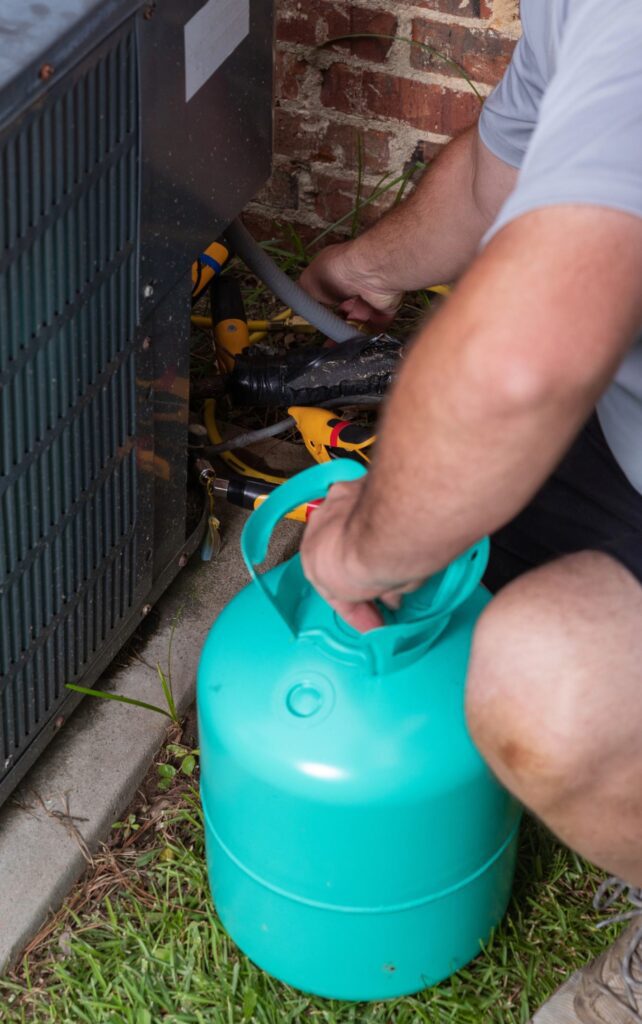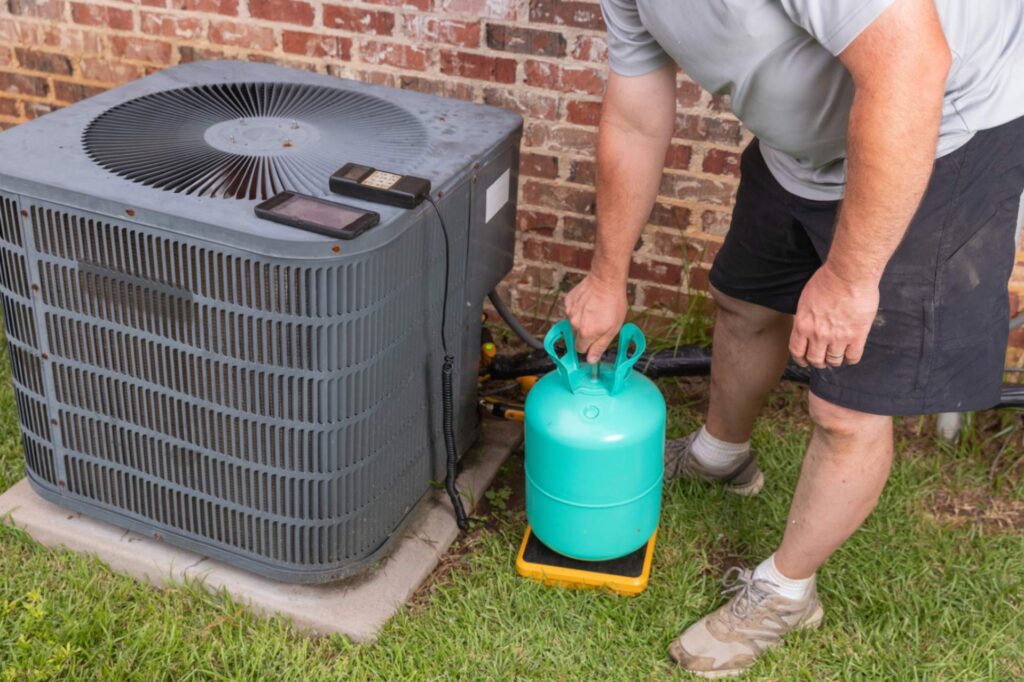In the HVAC industry, R-410A refrigerant has long been a staple for homeowners nationwide. As regulations evolve and the 2025 phase-out looms, understanding what this means for homeowners everywhere (but especially our local homeowners in Monroe, Ohio) is essential.
In the HVAC world, refrigerants are crucial, playing a key role in cooling and dehumidifying air within both refrigeration and air conditioning systems. This refrigerant has been a commonly used refrigerant for many years, but recent changes in regulations have led to questions about the future of R-410A, especially concerning its phase-out. Today, we’ll delve into why R-410A might be phased out, what it means for HVAC, and explore emerging alternatives.

1. What Is R-410A Refrigerant?
To comprehend the potential phase-out implications, it’s vital to understand it first. R-410A is a hydrofluorocarbon (HFC) that has gained popularity in both residential and commercial air conditioning systems. Originally, it was introduced as a more environmentally friendly alternative to R-22, which was phased out due to its ozone-depleting effects. R-410A became the favored refrigerant due to its effective cooling capabilities and efficiency.
Unlike chlorofluorocarbons (CFCs) and hydrochlorofluorocarbons (HCFCs), R-410A doesn’t harm the ozone layer. However, it has a high global warming potential (GWP), raising concerns about its environmental footprint.
2. R-410A and a Move Towards Environmental Responsibility
The potential phase-out of R-410A is part of a global effort to reduce greenhouse gas emissions and tackle climate change. The Kigali Amendment to the Montreal Protocol—a major international agreement—aims to cut down HFC production and consumption, including R-410A, by over 80% in the next 30 years. This pact emphasizes the necessity for HVAC manufacturers to shift to refrigerants with lower GWP values.
In the U.S., the Environmental Protection Agency (EPA) has implemented rules under the American Innovation and Manufacturing (AIM) Act, aimed at reducing the use of HFCs. These regulatory measures are pushing the industry towards more sustainable solutions.
3. Will R-410A Be Phased Out in 2025?
The timeline for phasing down HFCs like R-410A can differ depending on national and regional regulations. However, significant efforts to reduce R-410A usage are projected around 2025 as per the Kigali Amendment framework and the EPA’s AIM Act targets.
A complete global phase-out might not occur by 2025, but new restrictions on HVAC equipment using R-410A are likely to tighten. Manufacturers may stop producing new systems that depend on R-410A and will pivot to designing equipment compatible with next-gen refrigerants with lower GWP.
4. The Phase-out of R-410A and Its Impact on the HVAC Industry
It’s possible phase-out has wide-ranging implications for the HVAC sector. Key areas of impact include:
Switching to New Refrigerants: HVAC manufacturers and service providers need to gear up for transitioning to more eco-friendly refrigerants. Alternatives such as R-32, R-454B (Opteon™ XL41), and R-466A (Solstice® N41) are being embraced due to their lower GWPs. It’s important for industry professionals to familiarize themselves with these new options to provide viable solutions to customers.
Training and Certification Needs: New refrigerants mean updated training and certification are crucial. HVAC technicians will need to obtain new certifications to safely manage and service these refrigerants while complying with new environmental rules.
Retrofitting Options and Upgrades: Existing systems using R-410A may have retrofitting options to adjust for new refrigerants, though this can be costly and complex. Often, replacing older systems with new, energy-efficient units designed for low-GWP refrigerants is more practical.
Cost and Supply Dynamics: The transition to new refrigerants may affect the cost and availability of HVAC systems and parts. Initially, there may be higher costs due to the new technology and limited supply, but prices are expected to stabilize as production ramps up.
5. How Should You Prepare for the Transition without R-410A?
As the HVAC landscape shifts, it’s essential for stakeholders to stay informed and proactive. Consider the following steps:
- Stay informed about regulatory changes and timelines for refrigerant phase-downs, both internationally through agreements like the Kigali Amendment and domestically.
- Hire an HVAC company that will inform you and keep you up to date on the transition and current regulations.
- Explore all options for businesses and homeowners to assess the environmental and economic benefits of transitioning to new refrigerants.

Monroe Heating & Air is committed to guiding you through these changes and ensuring that your HVAC systems are both efficient and environmentally sustainable. After all, you deserve an HVAC company you can count on. Just be sure to leave any refrigerant work and system concerns to the pros at Monroe Heating & Air. When it comes to refilling your system, this is a job best left to the professionals. We’ll get your system back on track quickly and handle all your AC maintenance needs!
Feel free to call Monroe Heating & Air at your convenience by calling (513) 540-4890, or you can schedule an appointment by clicking here!
More HVAC Refrigerant Information
Our goal is always to keep you informed as best as we can. Learn more about the role of HVAC refrigerants and their role here!





